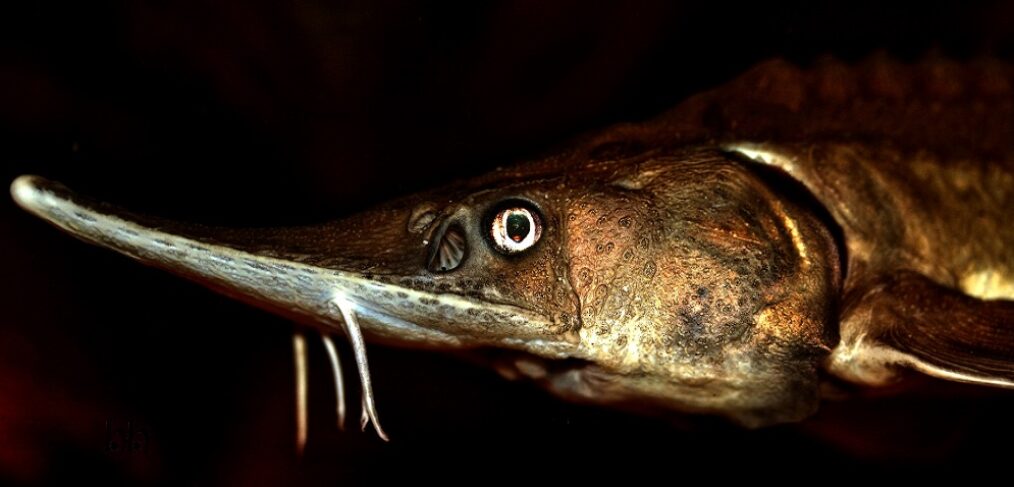
species of the week #77 – sterlet
The sterlet is one of the most primitive fish species on our planet and is not without reason referred to as a living fossil, as it has been travelling unchanged in our rivers for 200 million years. Its distinguishing features are the elongated, slender, spindle-shaped body with clearly pronounced bony plates on the back and side, a shark-like tail fin and the long mouth with drooping whiskers. On the outside of the mouth are electroreceptors with which it can perceive even weak electrical fields and small temperature differences and locate prey.
| Distribution status in rhineland-palatinate | extinct |
| Remaining deposits | Danube |
| Last sighting in rhineland-palatinate | unknown |
| Habitat | Cold, gravelly flowing waters with strong currents and high pH. |
| Threat | Habitat loss, water pollution, overfishing. |
The sterlet belongs to the sturgeon family. It reaches a maximum length of about 120 cm and a maximum weight of about 16 kg. It is a purely freshwater fish that is only rarely found in brackish water. Unlike other sturgeon species, it does not migrate to the sea. Worldwide, about 80 % of the sturgeon species are threatened with extinction. According to the IUCN, sturgeon are one of the most endangered animal groups on earth.
The main problem for the sterlet is the loss of its habitat: clean, gravelly waters with strong currents and at least 1.20 m depth. This is what the restless swimmer needs, always on the move. Even in summer, it prefers cool temperatures of 14-17 degrees Celsius and pH values between 6.0 and 8.0. Due to the pollution of our waters and the lack of passability (dams, power plants, etc.), which prevents it from returning to its spawning grounds, it has hardly any chance of survival in many areas. Fish ladders or other fish ladders hardly help the sterlet because it can hardly jump and prefers to live at the bottom of deep waters. In Russia, the roe is processed into caviar, and in many other areas the species is overfished.
In the meantime, breeding and reintroduction measures have been carried out in many countries within the framework of an EU-LIFE project. The first small reintroductions have been made in the Danube, the Isar and the Drau. However, long-term success depends above all on the elimination of negative influences such as pollution, construction and overfishing.
You like the species of the week? Here are some more
Image: By 5snake5 – Own work, CC0, https://commons.wikimedia.org/w/index.php?curid=75270691
